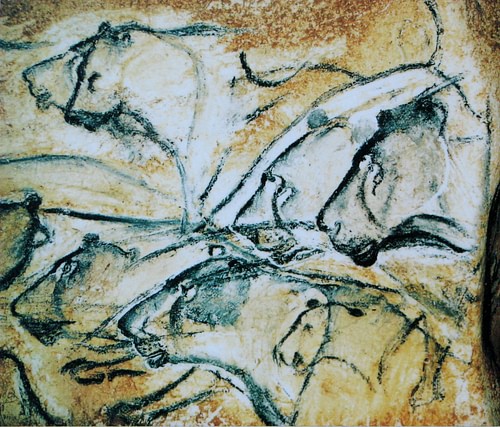Artifact: Chauvet Cave Art

Source: Public Domain. “Panel of Lions, Chauvet Cave.” World History Encyclopedia, www.worldhistory.org/Chauvet_Cave/.
The Chauvet Cave is a Palaeolithic cave in Vallon-Pont-d’Arc of Southern France. This cave contains 35,000 year old works of art that were completed by our ancestors, showing various painted and engraved animals throughout the cave. In this sense, all the work in this cave is dated and preserved naturally from degradation. I’d argue that this artifact is authentic due to radiocarbon dating tests that have been completed, the natural state of nature to preserve such artifacts, and the setting of the cave itself before discovery. Firstly, radiocarbon dating tests have been completed on this work to prove that this work has not just been completed within the years or couple decades as the carbon test estimates the years to be over 35,000 years old. From this scientific means of proving, the authenticity level is high as this process of testing can be replicated to achieve the same or similar results. Next, this state of conservation for the cave paintings can be explained scientifically by the nature of caves itself where the temperature is maintained without having external influence. Due to the air condition being different from the inside and outside as well as caves maintaining a cooler temperature, the cave paintings do have the potential to not be touched for years. In addition, the history of the cave is that the entrance of the cave had collapsed which would mean that humans couldn’t have contact with these paintings. In this sense, as it hasn’t been touched by humans and is preserved naturally by the surrounding conditions, this work has the characteristics of being authentic.
If this artifact had the possibility to be fake, I would argue that people may argue that the lack of observation could be a factor of authenticity. In this sense, people would be skeptical if this artifact were actually real due to the laws in place to protect it from being entered by individuals. This would mean that this sort of cave painting and news could be fabricated to be a protected heritage and history artifact when it actually is a fake to promote the “art” of France. There is also another key factor being that due to this cave never having been opened to the public, there is a lack of verification from the public to determine the authenticity of the cave where the public can only visit a replica of this cave which is unauthentic in itself. From this lack of authenticity, it would be argued that this work isn’t real if the source of observed verification is a fake of knowledge itself.
Leave a Reply